Science 5.10
Organisms and environments. The student knows that organisms have structures and behaviors that help them survive within their environments. The student is expected to:
- (1) compare the structures and functions of different
species that help them live and survive in a specific environment such as
hooves on prairie animals or webbed feet in aquatic animals; and
- (A) differentiate between inherited traits of plants and animals such as spines on a cactus or shape of a beak and learned behaviors such as an animal learning tricks or a child riding a bicycle.
- Free Plan
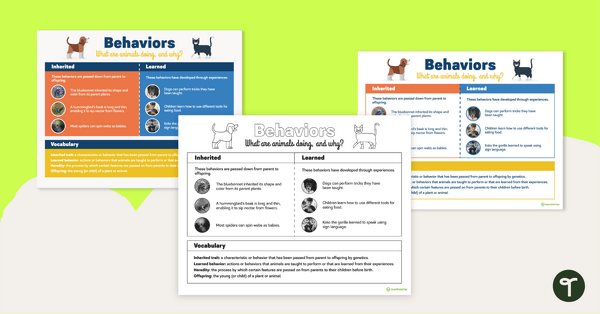
Inherited versus Learned Behaviors Poster
Explain the difference between inherited and learned behaviors with a set of printable anchor charts.
- Plus Plan
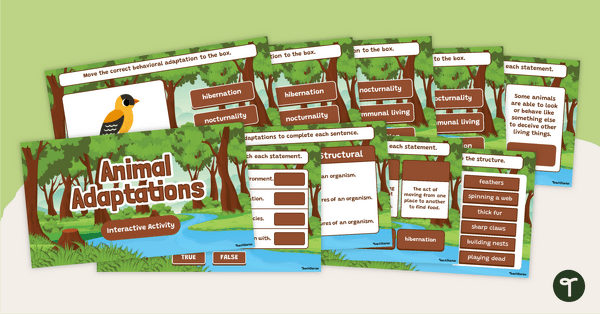
Animal Adaptations Digital Learning Activity Slides
Discover a variety of structural, behavioral, and physiological adaptations with an Animal Adaptations Digital Learning activity.
- Plus Plan
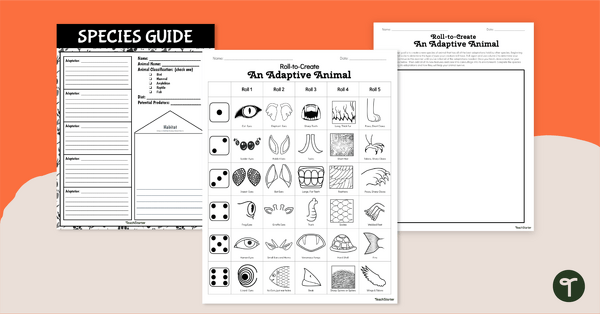
Roll to Create an Animal - Adaptations Activity
Roll to choose cool animal adaptations for a mystery animal using a fun dice game and report template.
- Plus Plan
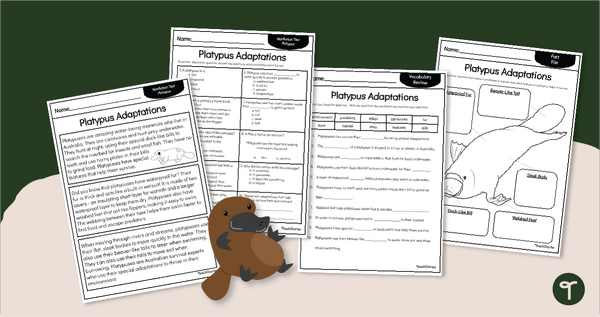
Platypus Adaptations - Reading Passage & Questions
Learn about the physical and behavioral adaptations of the platypus with a set of printable reading comprehension worksheets for 4th grade.
- Plus Plan
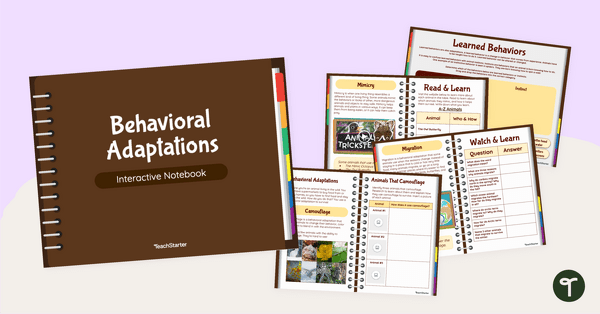
What Are Behavioral Adaptations? Digital Interactive Notebook
Discover behavioral adaptations of animals with an independent research-based Behavioral Adaptation Digital Learning Notebook.
- Plus Plan
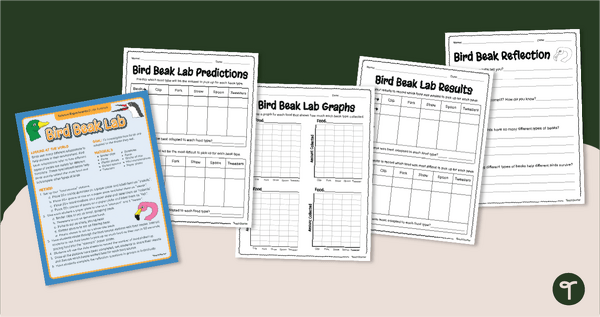
Bird Beak Lab Activity
Discover how birds’ beaks help them find food and survive in the wild with a hands-on Bird Beak Adaptation Lab.
- Plus Plan
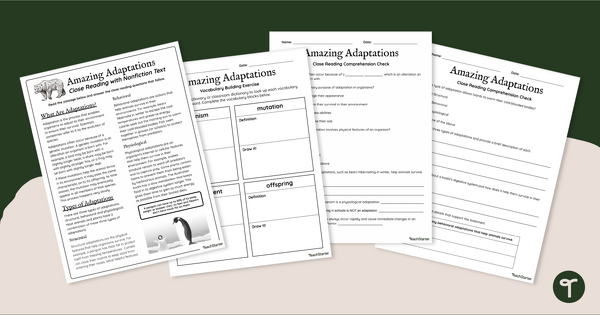
Plant and Animal Adaptations - Comprehension Worksheets
Boost reading comprehension skills with a comprehension passage, with questions, about structural, behavioral and physiological adaptations.
- Plus Plan
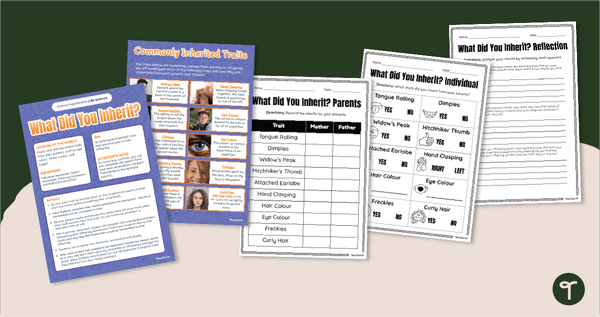
Human Inherited Traits Activity - Science Experiment
Engage your students in learning about the traits inherited from their parents with a fun Human Inherited Traits Lab activity.
- Plus Plan
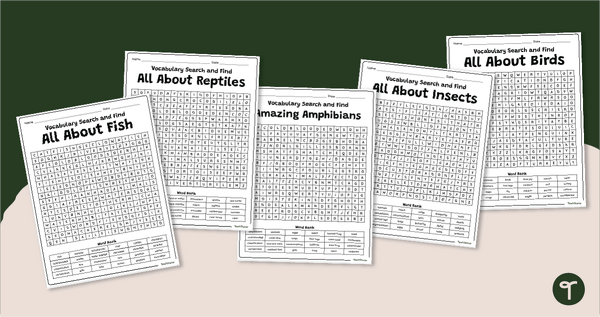
Animal Classes Word Search Pack - Upper Grades
Review vocabulary related to animal classes and characteristics of animals with a pack of printable animal classification word searches.
- Plus Plan
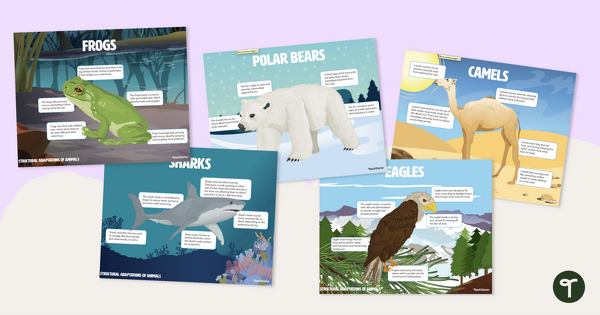
Animal Adaptations - Structural Adaptation Posters
Highlight some physical adaptations of animals with a printable set of labeled anchor chart.
- Plus Plan
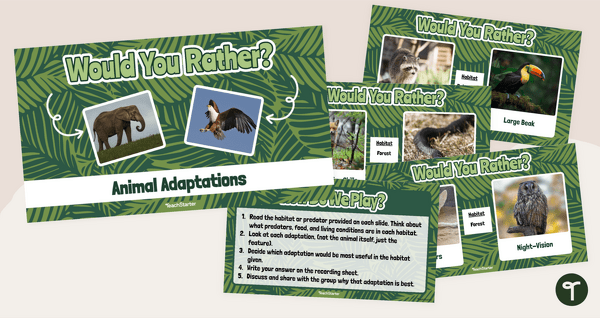
Would You Rather? Animal Adaptations Game
Discuss and debate the best animal adaptations with the Would You Rather? Animal Adaptation game.
- Plus Plan
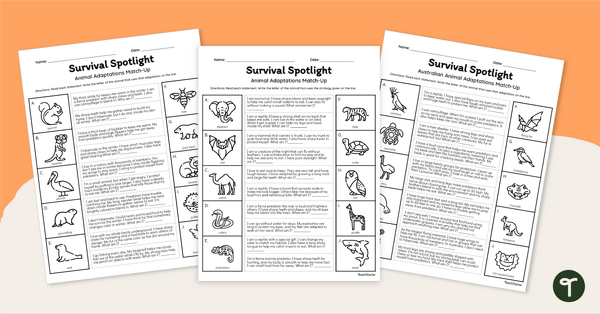
Survival Spotlight - Physical Adaptations Animal Riddle Worksheets
Shine a spotlight on animal adaptations and solve riddles with printable animal adaptation riddle worksheets.
- Free Plan
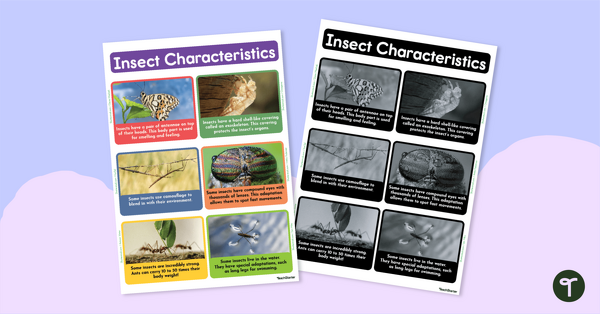
Facts About Insects Poster
Display this poster showcasing interesting insect facts and characteristics in your classroom.
- Plus Plan
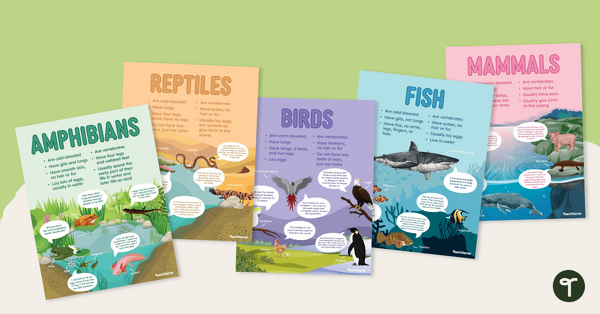
Animal Classification Posters
Display information about birds, mammals, amphibians, fish, and reptiles with this poster pack.
- Plus Plan
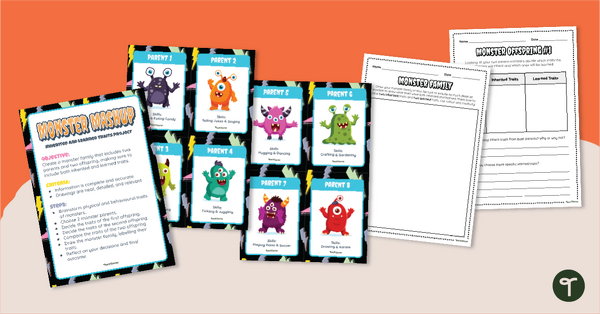
Monster Mashup - Inherited Traits Activity
Introduce your students to inherited traits and learned behaviors through an exciting Monster Mashup Inherited Traits Activity!
- Plus Plan
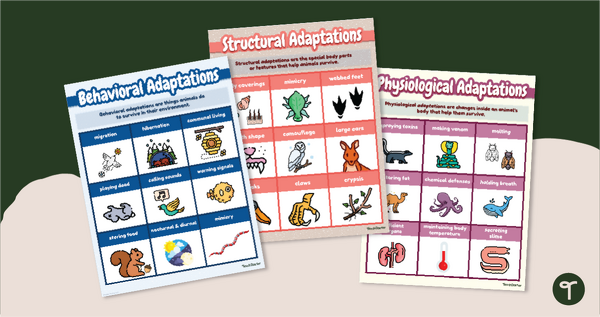
Animal Adaptation Examples – Anchor Chart Set
Help your students identify physiological, behavioral, and structural adaptations with printable Examples of Adaptations Anchor Charts.
- Plus Plan
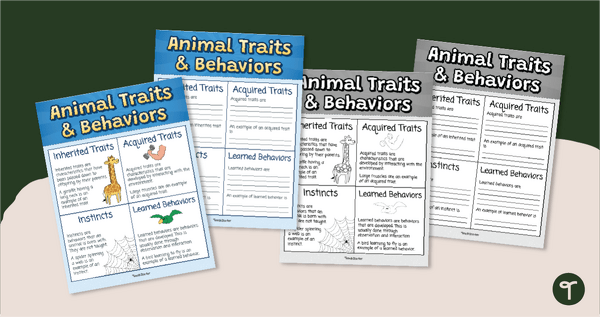
Animal Traits and Behaviors Anchor Charts
Help your students differentiate between inherited and acquired traits, instincts, and learned behaviors with a printable science anchor chart and note-taking organizer.
- Plus Plan
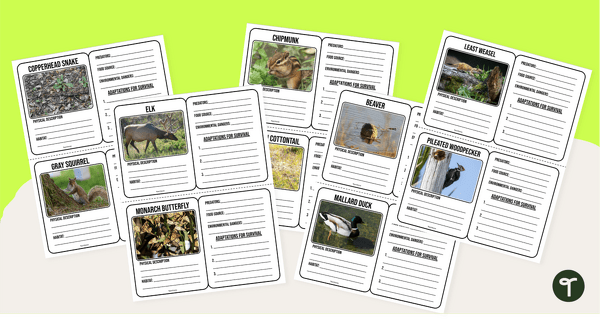
Forest Animal Adaptations Trading Cards
Discover the adaptations of animals in the forests and woodlands with printable animal trading card templates.
- Plus Plan
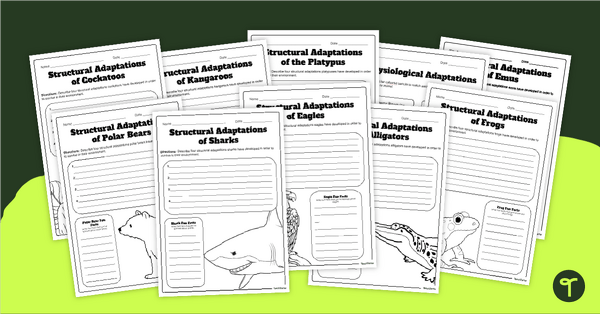
Animals With Adaptations - Worksheet Pack
Use these animal adaptation worksheets when teaching students about the structural, behavioral, and physiological adaptations of animals.
- Free Plan
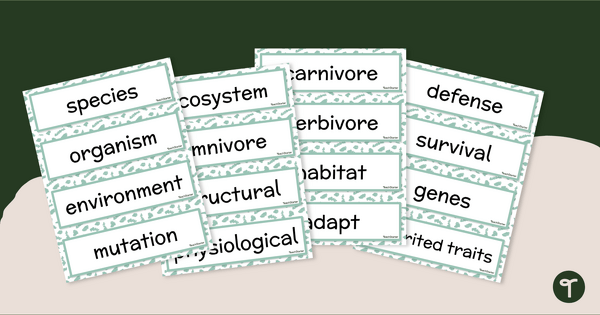
Plant and Animal Adaptations – Word Wall Vocabulary
Build scientific vocabulary skills with a printable display of words relating to plant and animal adaptations.
- Plus Plan
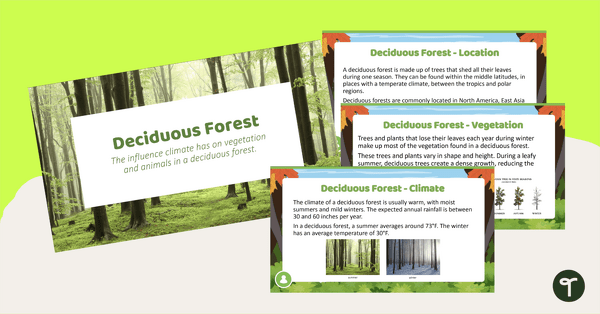
Deciduous Forest Biome Slide Deck
An 11-slide editable PowerPoint to use in the classroom when learning about deciduous forests.
- Plus Plan
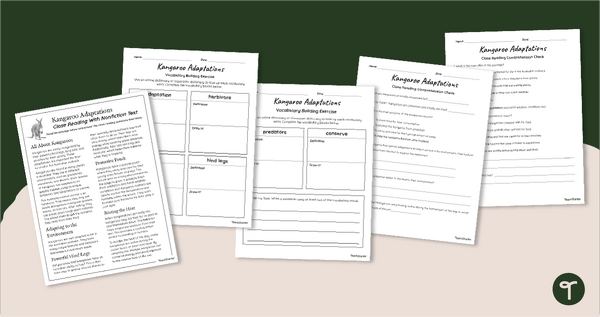
Kangaroo Adaptations – Reading Comprehension PDF Worksheets
Discover amazing kangaroo adaptations with a printable Reading comprehension worksheet pack.
- Plus Plan
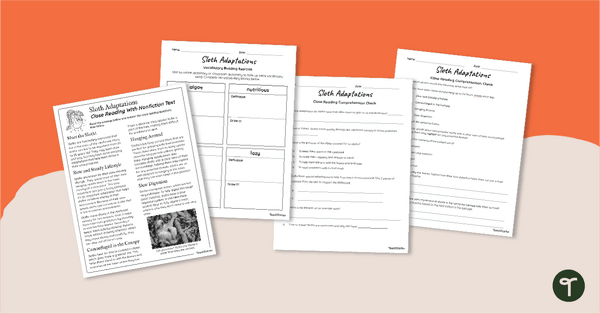
Sloth Adaptations – Comprehension Skills Worksheet
Read and comprehend nonfiction text about the adaptations of a sloth with a printable pack of reading skills worksheets.
- Plus Plan
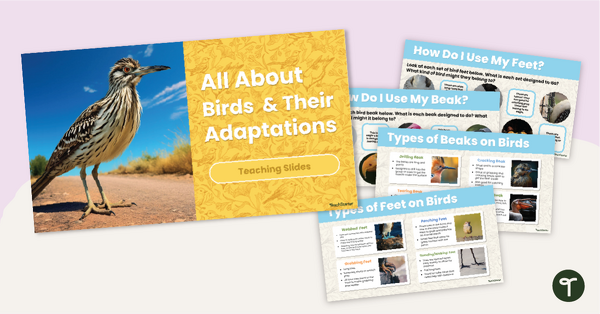
Types of Bird Feet and Bird Beaks - Adaptations Lesson Slides
Take a look at the types of bird beaks and feet that help our flying friends survive in different environments.
- Plus Plan
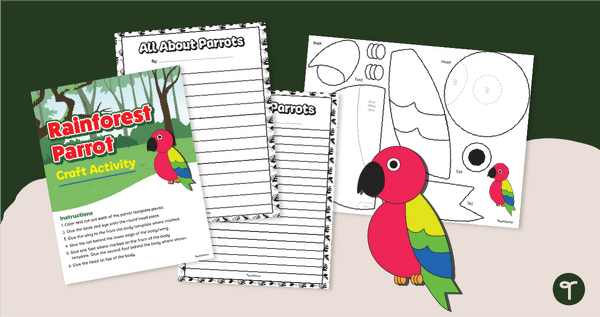
Rainforest Bird Craft & Writing Template
Pair a fun bird craft and informational writing to create a fun jungle-themed bulletin board.
- Plus Plan
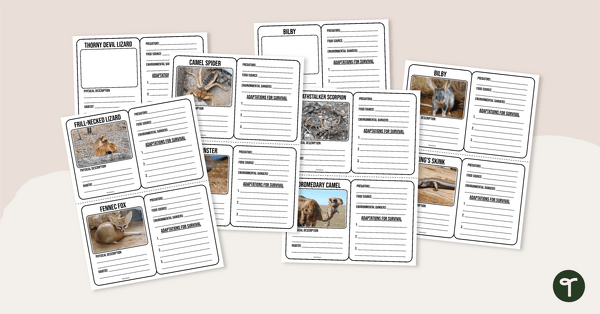
Desert Animal Adaptations - Trading Card Templates
Discover amazing desert animals’ adaptations and display your learning with printable animal trading card templates.
- Plus Plan
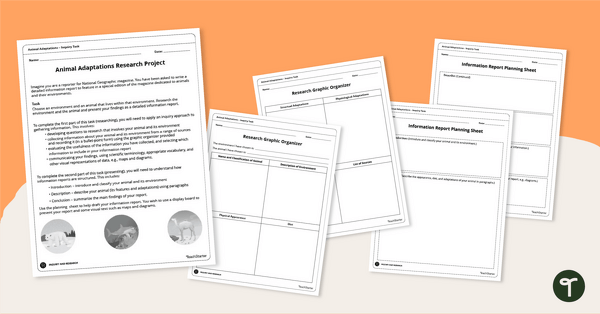
Animals That Adapt - Research Project & Report
Strengthen your students' understanding of conducting research with an Animal Adaptations research project.
- Plus Plan
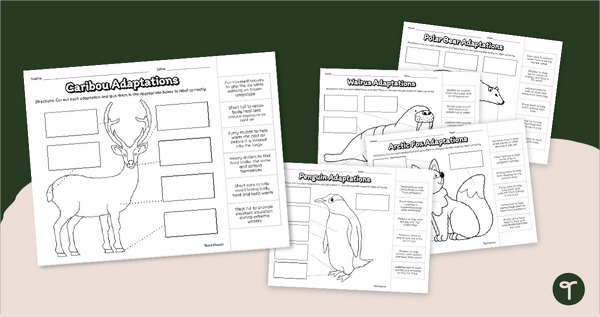
Adaptive Animals of the Arctic - Adaptations Worksheets
Explore the adaptations of polar animals and discover how they help them survive with a set of cut-and-paste labeling activity sheets.
- Plus Plan
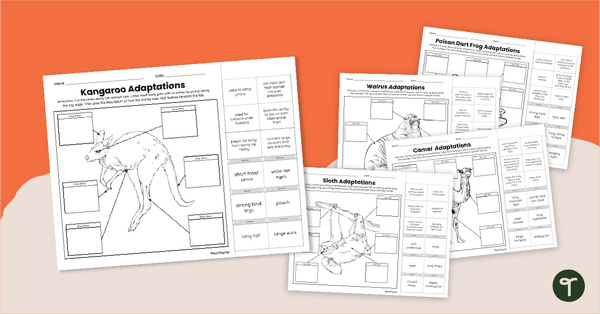
Animal Adaptations for Kids - Worksheet Pack
Identify and label different animal features and discover how these adaptations help animals survive with a pack of printable lift-the-flap matching worksheets.
- Plus Plan
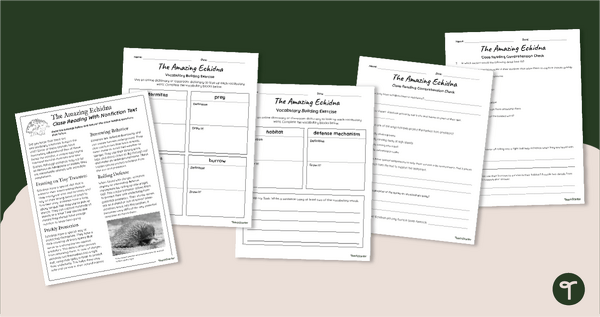
Echidna Adaptations – Reading Worksheet Pack
Discover the adaptations of the echidna with a printable reading passage and comprehension worksheet pack.
- Plus Plan
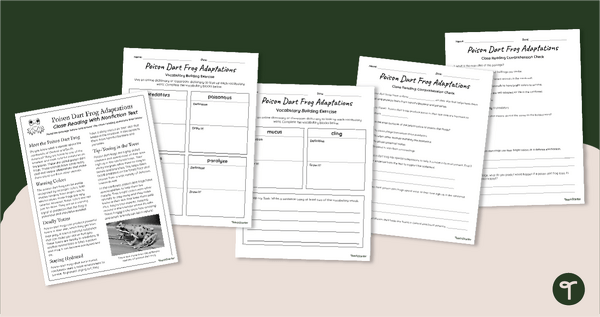
Poison Dart Frog Adaptations – 4th Grade Reading Worksheets
Explore the adaptations of a poison dart frog with printable reading comprehension worksheets for 4th grade.
- Plus Plan
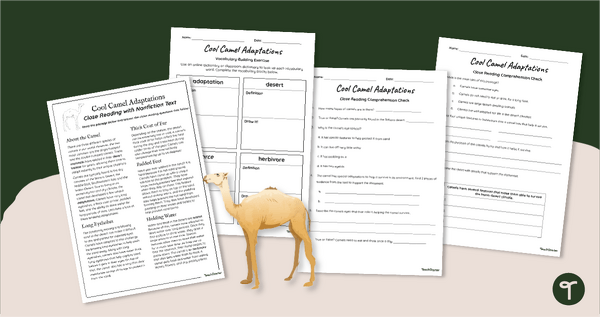
Camel Adaptations - 5th Grade Reading Worksheets
Learn about the physical and behavioral adaptations of a camel with a set of printable reading comprehension worksheets for 5th grade.